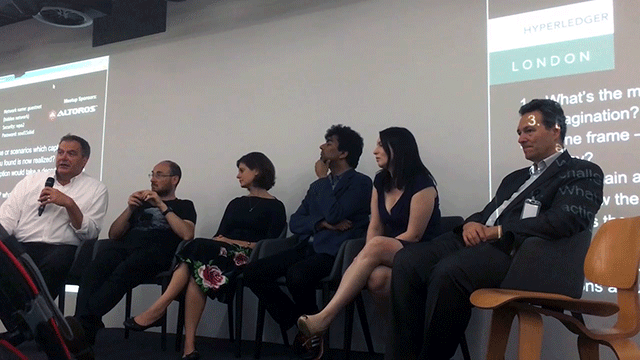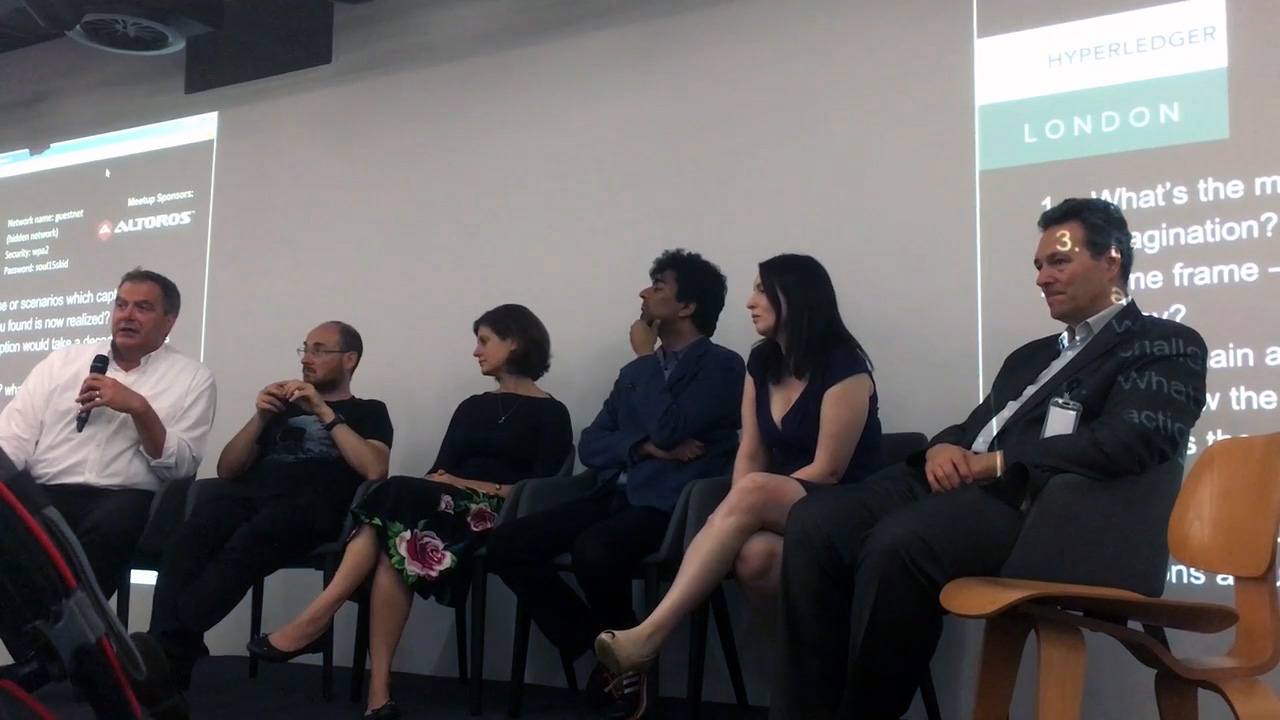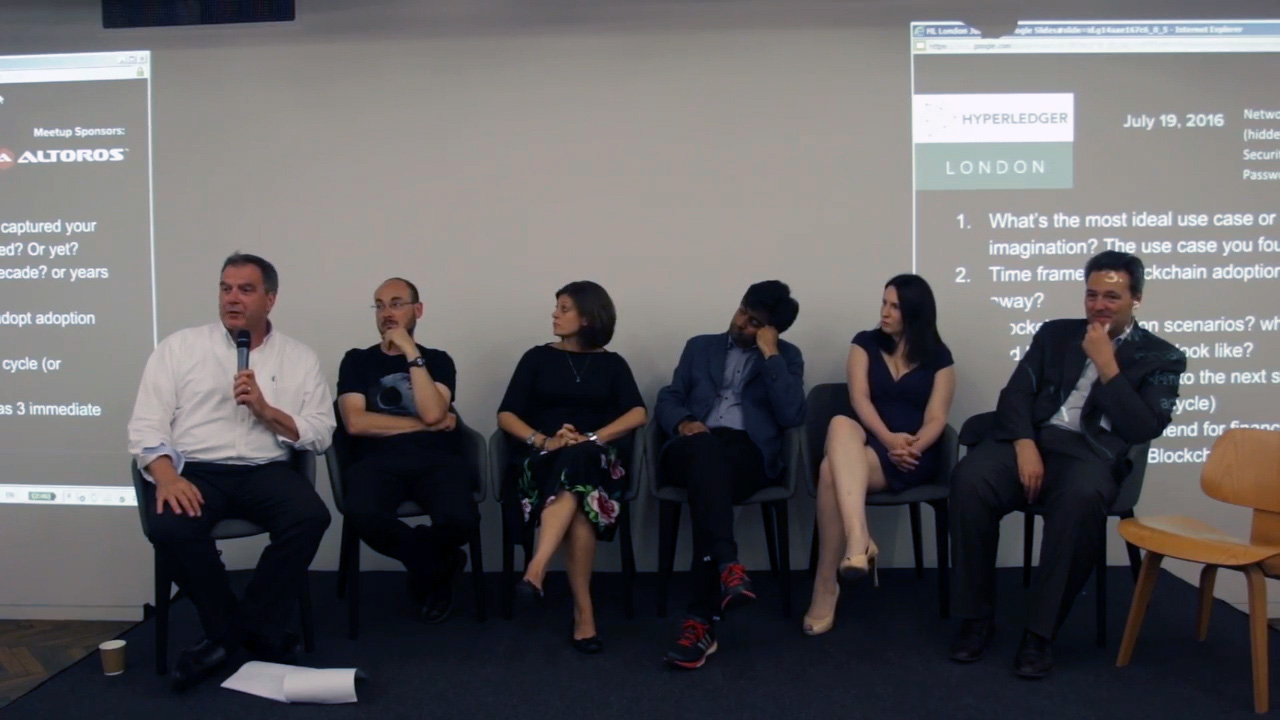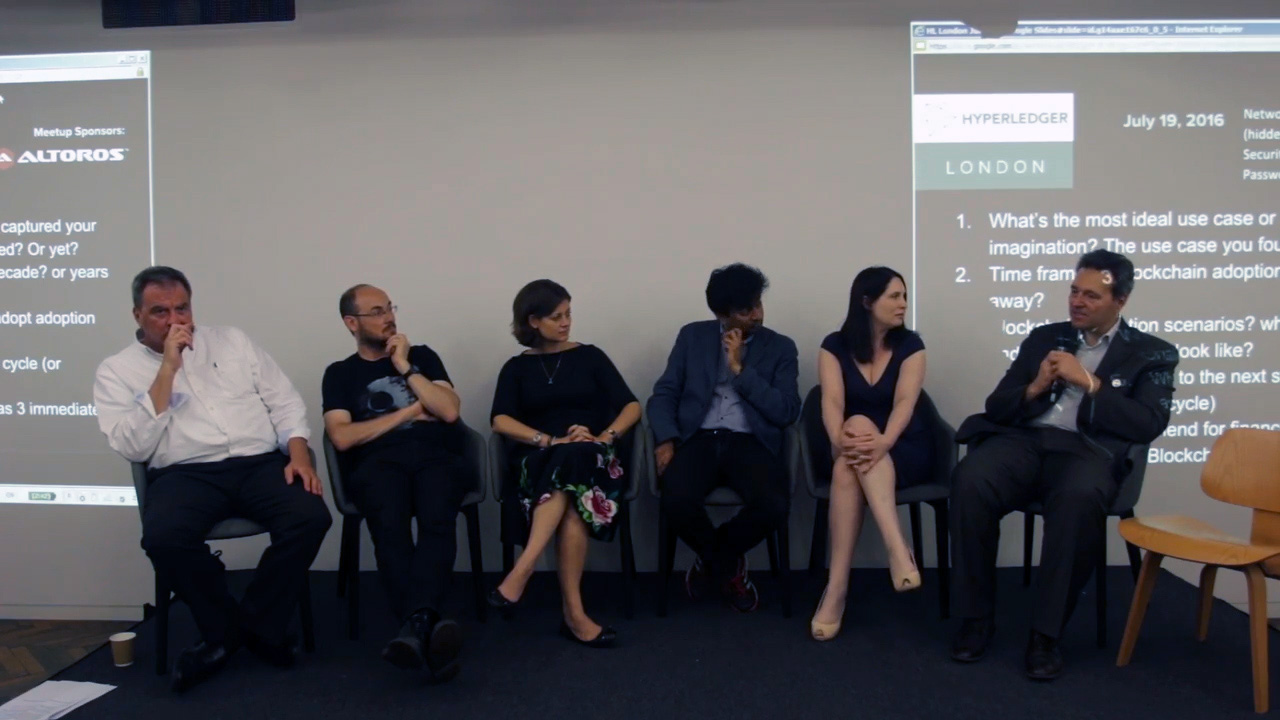What Is the Future of Blockchain?

A lively panel discussion was moderated by data science and blockchain consultant Yiseul Cho. In addition to Olivier Roucloux (finoryx) and Mark Simpson (Royal Bank of Scotland), the panel comprised Paul Ferris (ObjectChain), Leda Glyptis (Sapient Global Markets), Anish Mohammed (Lloyds Banking Group), and Imogen Garner (Norton Rose Fulbright).
Securing identities
Panel members riffed off the basic questions of what was most interesting about blockchain and how long it will take for widespread adoption.
Paul Ferris said that self-sovereign identity was the most interesting thing to him. “Today, your identity is held by many organizations in different ways and formats. It’s a broken system. But imagine you controlled your own identity and just gave organizations their required amount and not everything.”
Leda Glyptis said her immersion into blockchain began when she encountered the idea of self-regulating securities, “with little backpacks saying you can’t touch it. So, there’s been energy channeled into smart contracts, which is re-imagining of the way we do things.”
“The blockchain technology represents (an approach) that fundamentally redefines our value chain.” —Leda Glyptis, Sapient Global Markets
Thinking along those lines, she also noted the reaction “could be fear or excitement. What is it we want to see adopted?” If an industry is about to be disrupted, for example, “How long will it take for people to fund their own demise?”
Anish Mohammed demonstrated his security chops to the degree it seemed a separate meetup might be needed just to cover all of his expertise in the area. Nevertheless, he stressed that “this is not just a technical issue. What does it really mean not to have privacy, for a society not to have privacy?”
“What does it mean for a society not to have privacy?” —Anish Mohammed, Lloyds Banking Group
Dynamism vs. inertia
Imogen Garner noted the dynamism of this technology. “This is a sphere of activity in which developments happen quickly. But then, law and policy makers don’t act so quickly.”
Olivier Roucloux wondered whether the primary discussion should even be about blockchain or about things such as mobility, digitization, and changing customer behavior that may lead to the use of blockchain.
“What is the real trigger for blockchain?” he asked.
A price of blockchain?
The ideas of revenue generation, cost, and viability itself were featured in the latter stages of discussion.
Mark Simpson had mentioned that “revenue generating things—not just reconciliation and derivatives, for example—are more interesting to me.”
Paul Ferris noted the promise of blockchain taking out billions upon billions of dollars (or pounds) in expenses, but also that blockchain’s roots in bitcoin “still scare a lot of people.”
“We’ve been working to convince politicians in the UK, for example, that not all blockchain proponents were gun runners and drug lords.” —Paul Ferris, ObjectChain
Oliver also noted, quite significantly, that he’s “never seen a price for what blockchain might actually cost, so any ROI analysis at this point is nonsense. There’s nothing concrete unless you prove there’s a metric that says how much it costs. Can (anyone) give a price to blockchain?”
Who can answer that question?
Want details? Watch the video!
Table of contents
|
Related reading
- Blockchain Bottlenecks in Finance, Healthcare, and Insurance
- Hyperledger/Blockchain Main Drivers, Use Cases, and Implications
- Hyperledger and Blockchain Are in the Wright Brothers Era
- Blockchain Adoption: Industry Requirements and the Role of Prototypes
- The Royal Bank of Scotland Builds a Hyperledger Digital Wallet: the Lessons Learned
About the panelists















